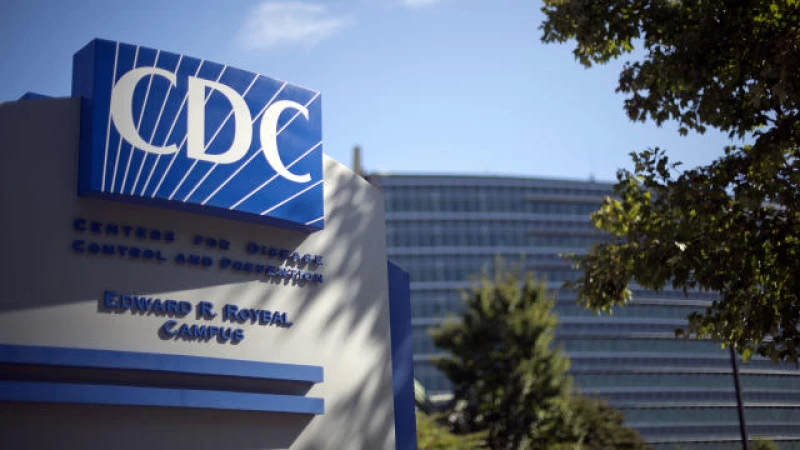Hospitals and Emergency Rooms Could Face Rationing of Care
The Centers for Disease Control and Prevention (CDC) issued a warning on Thursday, stating that hospitals and emergency rooms may be forced to ration care by the end of this month. The CDC highlighted the concerning trends in both COVID-19 and influenza, which are projected to strain America's healthcare system once again. According to the CDC's tracking, the new COVID variant JN.1 is responsible for an increasing number of cases.
In its weekly update, the CDC stated, "COVID-19 hospitalizations are rising quickly." The agency has been monitoring the rise of multisystem inflammatory syndrome in children (MIS-C), a condition caused by COVID-19, since the summer. Additionally, influenza activity is on the rise in most parts of the country, while RSV activity remains high in many areas.
The CDC has been actively urging individuals to get vaccinated as the peak of this year's mix of three seasonal respiratory viruses approaches. The combination of influenza, COVID-19, and RSV is expected to create a significant strain on the healthcare system.
In pediatric hospitals, the CDC reports that beds are already nearly as full as they were at this time last year in certain parts of the country. Data published on Wednesday indicates that emergency room visits for school-age children nearly doubled last week.
Sources: CDC Weekly Update, CDC Urging Vaccination, CDC Pediatric Hospital Data, CDC Emergency Room Visits
The number of emergency room visits has increased, largely due to a rise in flu cases. This comes after several weeks of relatively stable emergency room figures leading up to Thanksgiving.
Similar to this time last year, flu-related emergency room visits are now surpassing COVID-19 cases for the first time in months across most age groups. Only in seniors are COVID-19 rates significantly higher than flu rates.
Nursing homes have experienced a significant increase in reported COVID-19 cases in recent weeks. In the Midwestern region, which includes Illinois, Indiana, Michigan, Minnesota, Ohio, and Wisconsin, nursing home residents are already seeing infection rates higher than last year's peak.
Is there a new COVID-19 variant? What to know about JN.1
Officials estimate that a new COVID-19 variant called JN.1 is contributing to the current wave of infections. JN.1 is closely related to the highly mutated BA.2.86 variant that scientists initially warned about during the summer. Last week, the CDC projected that JN.1 could account for up to 29% of infections nationwide, up from 8.8% at the end of November.
Health officials have been closely monitoring the spread of BA.2.86 and its descendants, including JN.1, around the world in recent months. More than 40% of test results from the CDC's airport testing program for international travelers have detected these strains.
Revised Vaccination Recommendations
A panel of experts convened by the World Health Organization concluded this month that JN.1's changes were not steep enough to warrant a new revision to this season's vaccines, but acknowledged early data suggesting these shots were less effective at neutralizing the strain.
"CDC projects that JN.1 will continue to increase as a proportion of SARS-CoV-2 genomic sequences. It is currently the fastest-growing variant in the United States," the CDC said last week.
"Right now, we do not know to what extent JN.1 may be contributing to these increases or possible increases through the rest of December like those seen in previous years," they wrote.
However, so far the CDC had said that so far JN.1's fast spread does not appear to be leading to any upticks in the severity posed by COVID-19.
How big is the vaccination gap?
As COVID-19 and other respiratory viruses have accelerated in recent weeks, health officials say they have also been closely tracking an unprecedented drop in vaccinations this season.
Data from insurance claims suggest flu vaccinations in adults are around 8 million doses behind vaccination levels seen last year. The CDC's survey data suggests flu shots in children are also down around 5 percentage points from the same time last year.
Missed Volume of Vaccines Difficult to Cover, Manufacturers Say
Vaccine manufacturers have expressed concerns about the difficulty or even impossibility of covering the missed volume of vaccines, according to a recent stakeholder meeting with the CDC. The meeting was summarized by the National Adult and Influenza Immunization Summit. This news comes as health officials continue to urge providers to increase COVID-19 vaccinations, particularly among high-risk groups such as seniors.
In nursing homes, the current COVID-19 vaccination rate is low, with just a third of residents and less than 10% of staff receiving the shot. CDC Director Dr. Mandy Cohen addressed this issue at an event hosted by the American Medical Association, stating that the uptake in vaccines is not meeting expectations.
Dr. Cohen also highlighted the low uptake of RSV vaccinations among older adults. Only around 16% of adults aged 60 and older have received the shot, which is concerning. She emphasized the need for a conversation to address this issue and improve vaccination rates.







